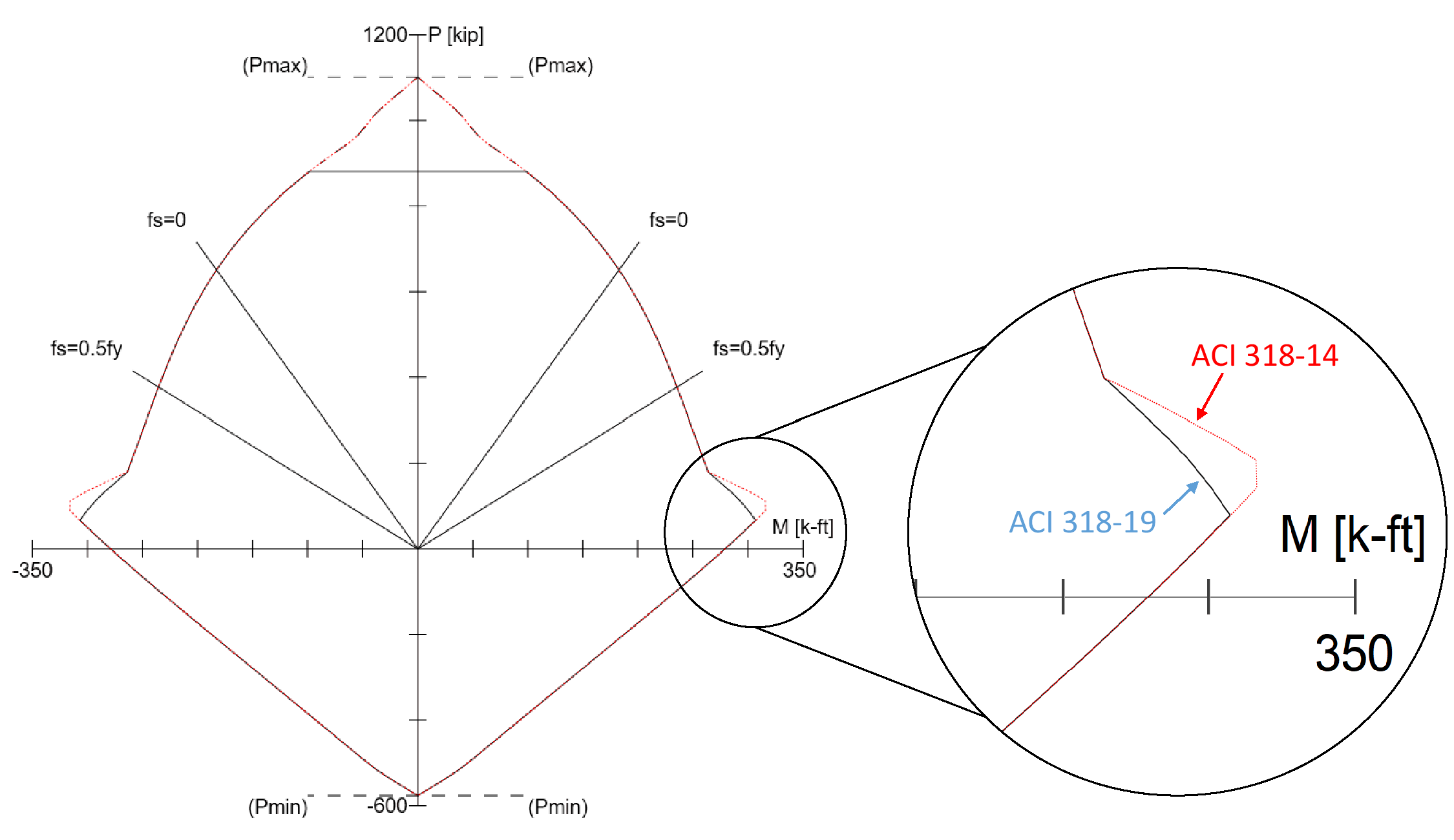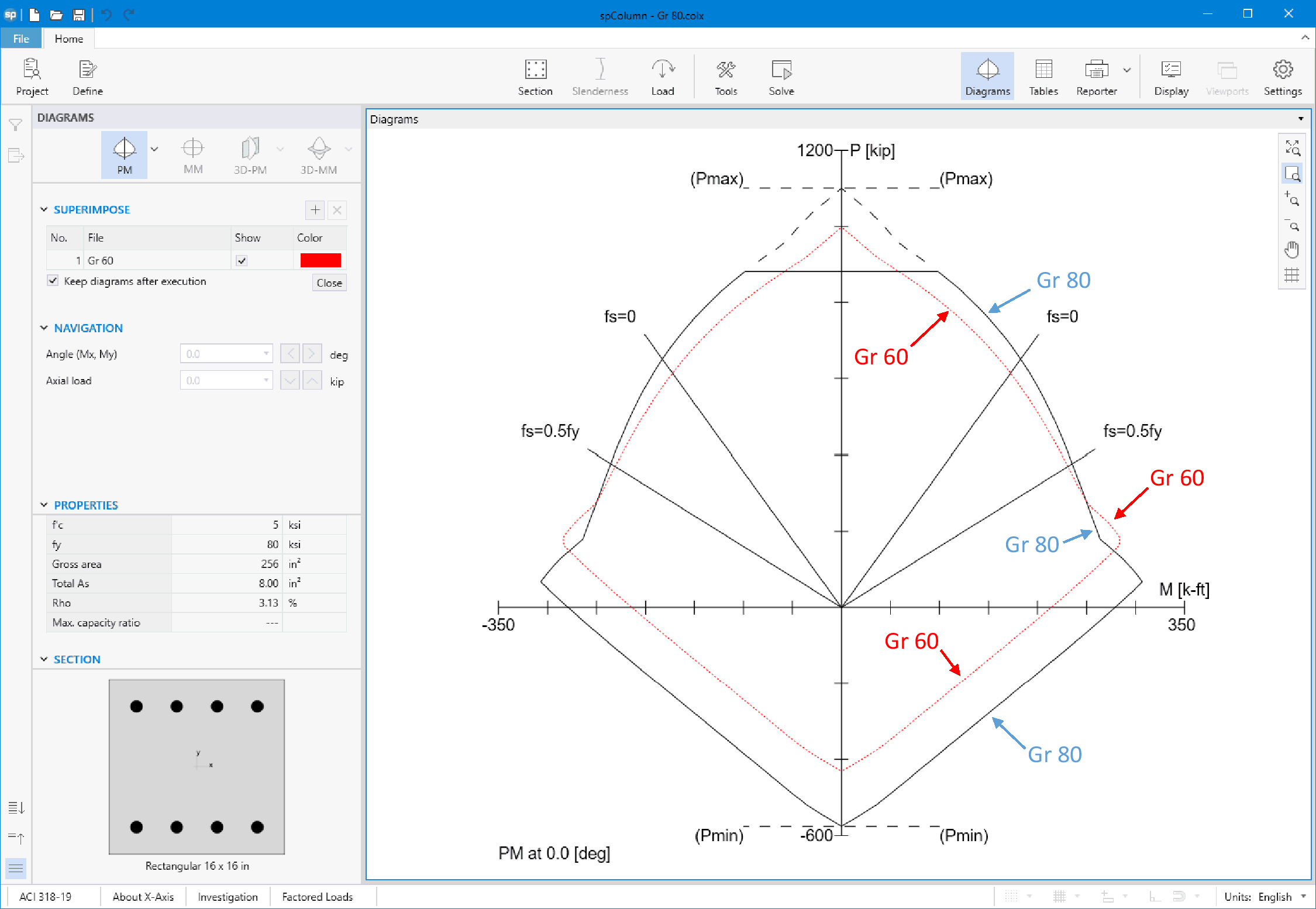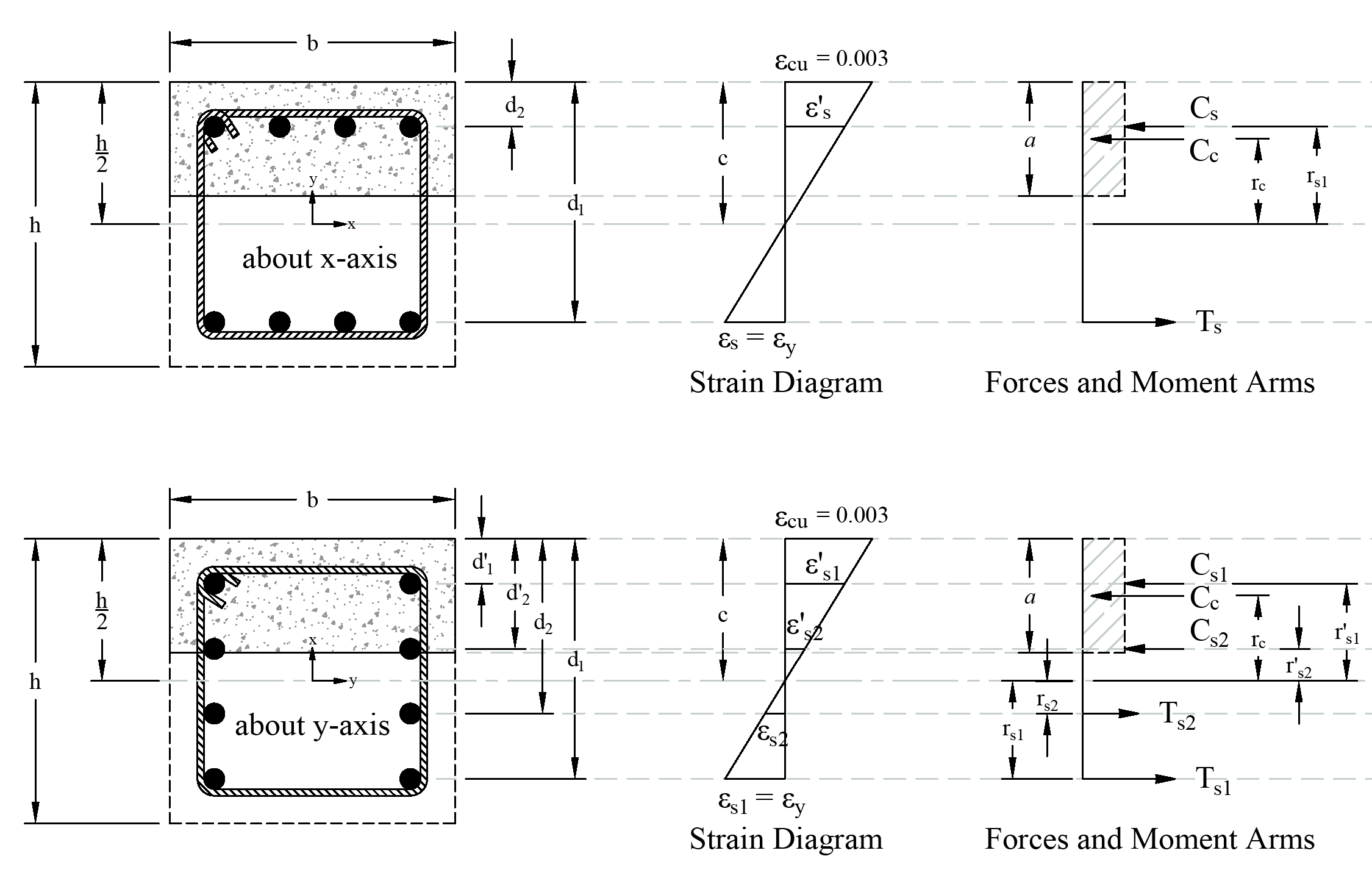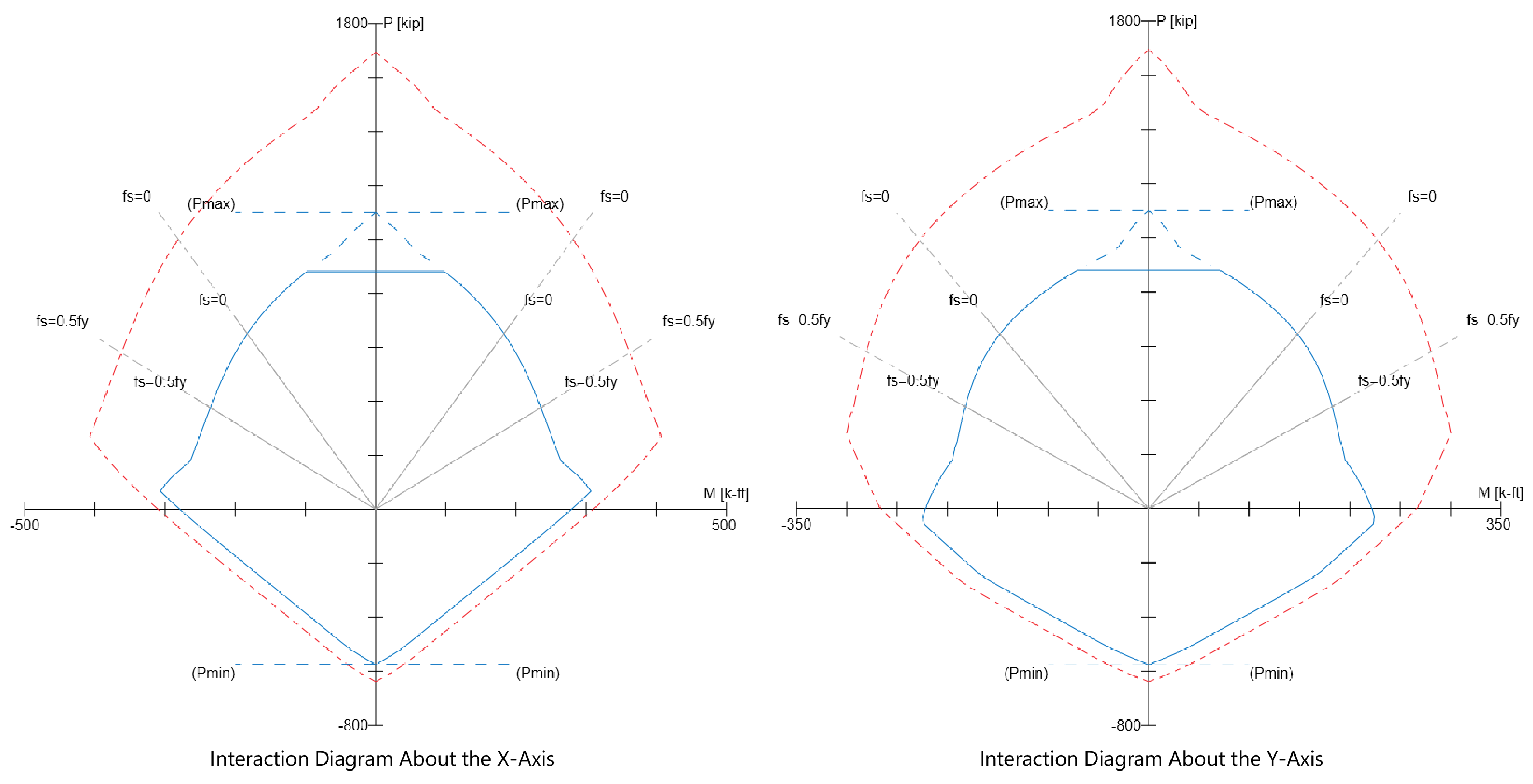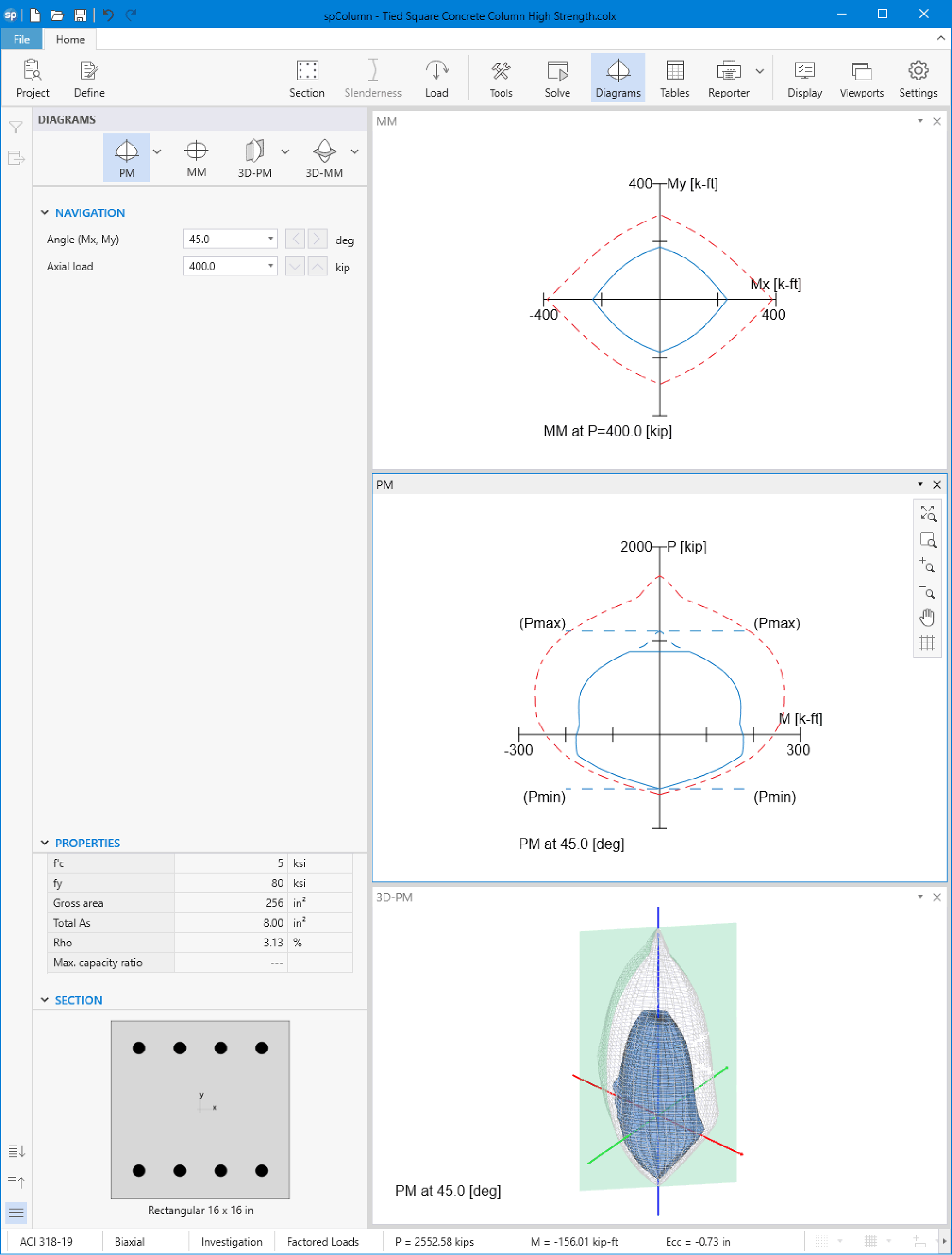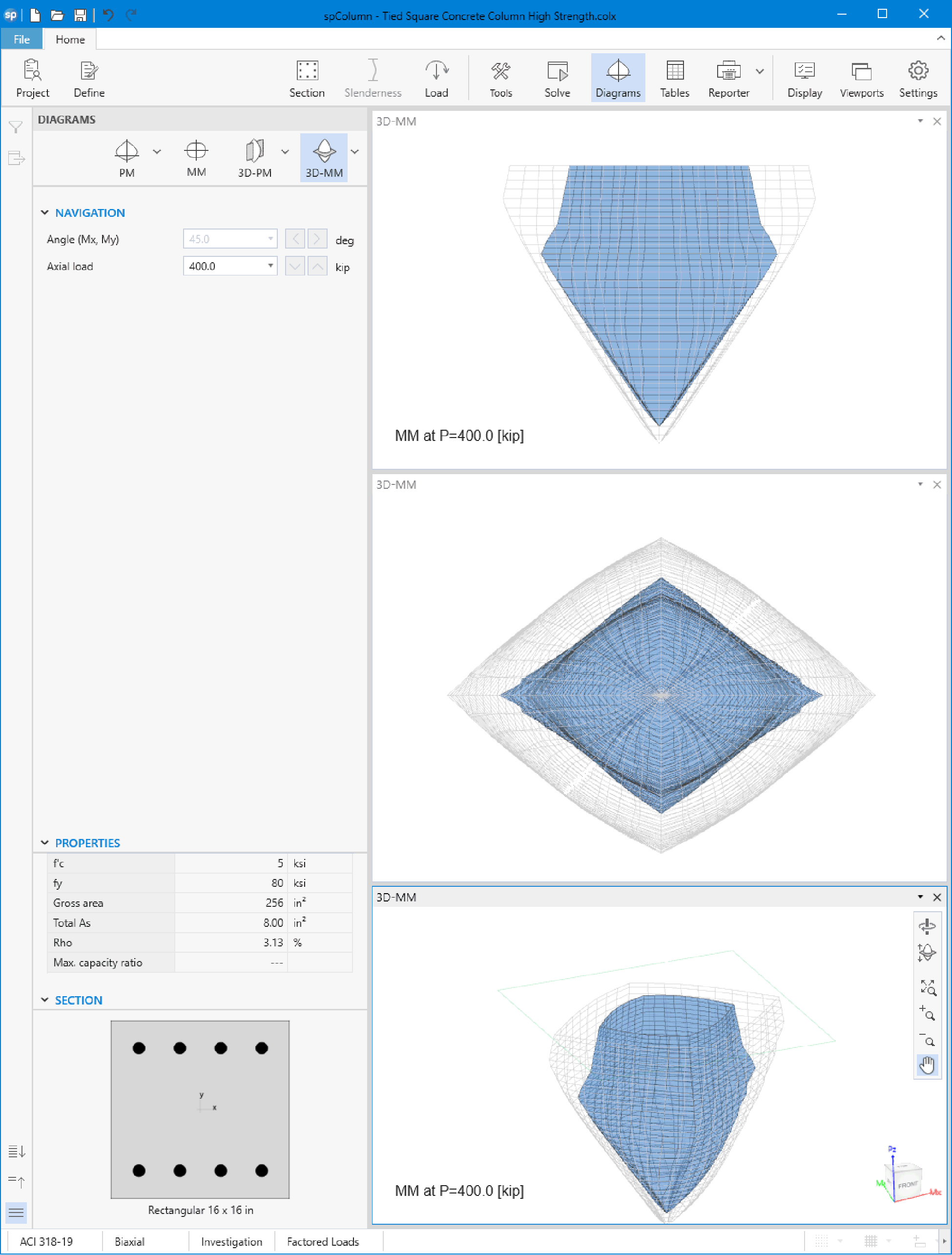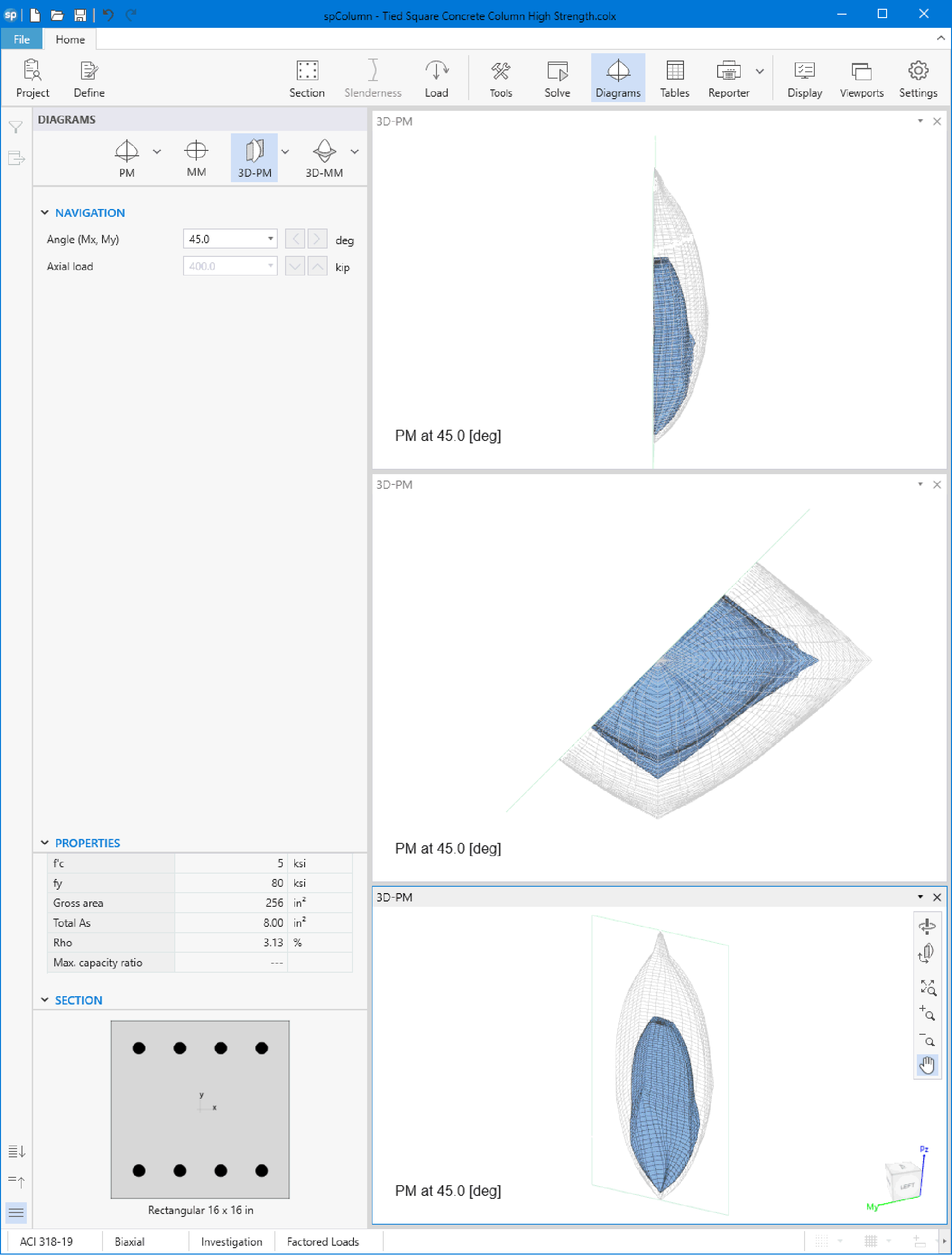10. Conclusions & Observations
The analysis of the reinforced concrete section performed by spColumn conforms to the provisions of the Strength Design Method and Unified Provisions with all conditions of strength satisfying the applicable conditions of equilibrium and strain compatibility.
ACI 318-19 introduced new provisions for high-strength reinforcing bars (HSRB) with 80 ksi and 100 ksi strengths. Table 21.2.2 in ACI 318-19 defines the strength reduction factor f, for tension-controlled sections as an expression of fy, for all reinforcement grades. Previously in ACI 318-14 Fig. R21.2.2b, the tension-controlled strain limit was set to 0.005. Therefore, beginning with the 2019 Code, the expression (εty + 0.003) defines the lower limit on εt for tension-controlled behavior. The new limit leads to a constant transition zone range from εty to εty + 0.003.
The Figure below shows factored P-M interaction diagrams for a column section with Gr 80 reinforcement per ACI 318-14 where the tension-controlled limit was 0.005 and per ACI 318-19 where the tension-controlled limit for Gr 80 is 0.00576 (εty + 0.003). The change in the tension-controlled limit leads to the reduction of axial load and moment capacities in the transition zone for this column section designed in accordance with ACI 318-19.
Figure 12 - Design (Factored) Interaction Diagrams using ACI 318-14 and ACI 318-19 (s)
The Figure below shows factored interaction diagrams for a column section with Gr 60 and Gr 80 reinforcement per ACI 318-19. The factored moment capacity of a column with Gr 80 reinforcement is greater than that of a column with Gr 60 reinforcement with the exception of the transition zone region of a column with Gr 60 reinforcement.
Figure 13 - Design (Factored) Interaction Diagrams using Gr 60 and Gr 80 (spColumn)
In the calculation shown above a P-M interaction diagram was generated with moments about the X-Axis (Uniaxial bending). Since the reinforcement in the section is not symmetrical, a different P-M interaction diagram is needed for the other orthogonal direction about the Y-Axis (See the following Figure for the case where fs = fy).
Figure 14 - Strains, Forces, and Moment arms (fs = - fy Moments About x- and y-axis)
When running about the Y-Axis, we have 2 bars in 4 layers instead of 4 bars in just 2 layers (about X-Axis) resulting in a completely different interaction diagram as shown in the following Figure. Further differences in the interaction diagram in both directions can result if the column cross section geometry is irregular.
Figure 15 - Comparison of Column Interaction Diagrams about X-Axis and Y-Axis (spColumn)
In most building design calculations, such as the examples shown for flat plate or flat slab concrete floor systems, all building columns are subjected to Mx and My due to lateral forces and unbalanced moments from both directions of analysis. This requires an evaluation of the column P-M interaction diagram in two directions simultaneously (biaxial bending).
StucturePoint’s spColumn program can also investigate column and wall sections in biaxial mode to produce the results shown in the following Figure for the column section in this example. In biaxial run mode, Mx and My diagrams at each axial force level can be viewed in 2D and 3D views.
Figure 16 - Nominal & Design 3D Failure Surfaces (Biaxial) (spColumn)
Figure 17 - Tied Column Interaction Diagram and 3D failure Surface Viewer (spColumn)
Figure 18 - Tied Column 3D Failure Surface with a Horizontal Plane Cut a P = 400 kip (spColumn)
Figure 19 - Tied Column 3D Failure Surface with a Vertical Plane Cut a 45º (spColumn)
